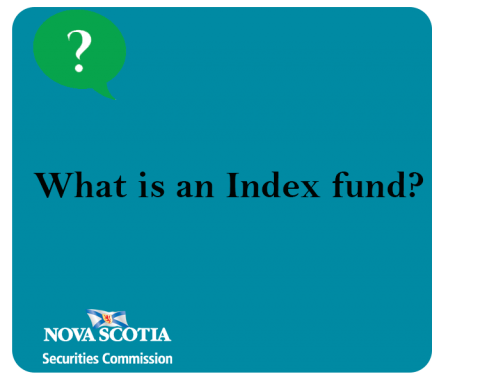Submitted by nsscadmin on

Last week we talked about Indexes and what it means when you hear on the news that the market is up, or the market is down. In Canada when they’re talking about the market, they’re usually talking about the S&P/TSX Composite. If this isn’t making sense to you, be sure to review our post on What is an Index? before proceeding.
Now that you know what an Index is, let’s talk about how you invest in them using Index funds. An Index fund is a type of mutual fund or exchange traded fund whose attributes and performance mirrors an Index. The first Index fund was created in 1975 by John Bogle. His fund attempted to mirror the S&P 500 Index.
Two major differences between an Index fund and a regular mutual fund are lower costs and how they are managed. Index Funds typically have lower management fees because they are not actively managed funds. Since an Index fund mirrors an Index the securities are already chosen, so a manager does not need to pick and choose to try and select securities to beat the market. An Index fund doesn’t try to beat the market, instead it tries to follow the market. It is typical for an Index Fund to have an expense ratio less than one per cent, while most mutual funds have expense ratios of higher than one per cent.
As with all investments, Index funds still come with risk and are not guaranteed to make or return money. Remember, an Index fund’s value is tied to the performance of the Index it is mirroring. So, if the market goes down your Index fund will also go down, losing value. However, if the market goes up your Index fund will keep pace and subsequently rise in value.
Because of this connection to market volatility Index funds are considered to be long-term investments, which allow investors to ride out the good and bad turns of the market over time.
